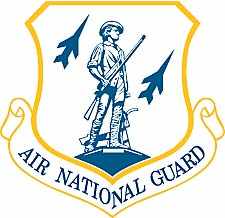A Dozen Air Guard Controllers Are Deployed In Haiti
 The recent arrival of Air National Guard air traffic
controllers in Haiti has greatly increased the number of flights
that are safely entering and leaving the country's air space.
The recent arrival of Air National Guard air traffic
controllers in Haiti has greatly increased the number of flights
that are safely entering and leaving the country's air space.
"The test of how well we are assisting and helping with the
ongoing operation can be found in the numbers," said Scott Duke,
chief of the Air National Guard's airfield services division.
"Before our presence, the daily count for arrival aircraft was
around 90 per day." By yesterday morning, he added, the number of
daily operations had jumped to 120.
"That is impressive and when you add the complexity of finding
parking spaces for these aircraft on an airport not designed for
that many airframes," he said. "You can immediately see the
benefit."
Twelve Air Guard air traffic controllers and an airfield
operations officer are deployed to Haiti, Duke said, and additional
air traffic control assets from the Air Guard are scheduled to
arrive within the next few days. "Once they arrive at the airport,
50 percent of the Air National Guard's air traffic control
squadrons will be directly supporting air traffic control
operations at the airport," Duke said.
An airfield management team also is scheduled to be sent to the
devastated country to help in developing effective parking plans
for aircraft, control vehicle traffic and manage flight plans for
arriving and departing aircraft, Duke said.

Airman 1st Class Devon Carroll Installs
Generator Fuel Tanks
The role of the controllers is more than simply telling pilots
when to take off and land, he noted. "In the case of
Port-au-Prince, the capabilities of the air traffic controllers
will be on display as they establish landing sequences to the
airport, coordinate departure routes, and do all the kinds of
things one would see at a typical airport," he said. However, he
added, the airport in the Haitian capital isn't a typical
airport.
"Obviously, the conditions on the ground at the airport present
different challenges to the controller force, as well as our
airfield managers, as they both orchestrate the many moving parts
of airport operations in a manner that keeps things safe and moving
efficiently," Duke said.
The Air Guard controllers are trained and equipped to negotiate
those challenges. Many of them, he pointed out, are Federal
Aviation Administration air traffic controllers in their civilian
careers. They also have the kind of tactical equipment needed to
stand up air traffic control operations at an austere landing
environment, or, in the case of Port-Au-Prince ... at an airport
that has lost air traffic control capability, he added. "The Air
National Guard comprises 62.5 percent of the Air Force's deployable
[air traffic control] mission," Duke said. "The 'embarrassment of
riches' we have in our community makes us the logical choice to
turn to in time of disaster."

The Air Guard's controllers have plenty of experience running
missions after disasters. In 2005, they were sent to the Gulf Coast
after Hurricane Katrina slammed ashore. "We deployed our air
traffic controllers and mobile control tower to the Gulfport-Biloxi
International Airport [in Mississippi] and began to control traffic
while the FAA worked on restoring the fixed control tower," Duke
said. "These kinds of missions are exactly why the Air National
Guard airfield services mission is so important to not only our
wartime requirements, but support of civil authorities in time of
need."
In the Katrina effort, the air traffic control squadrons sent to
the Gulf Coast arrived with mobile control towers. When they
responded in Haiti, they left their own towers at home station and
instead are using an FAA mobile tower, which Duke acknowledged has
created some challenges. "This change required our controllers to
get up to speed quickly on this new system, while at the same time
learning all the local area information about the airport, arrival
and departure paths, frequency assignments, and geographical lay of
the airport," he said.
The air traffic controllers are scheduled to be in Haiti for up
to 180 days, Duke said. Most will do a 90-day tour, and a follow-on
group will rotate in for the remaining time.
ANN Salutes Army Sgt. 1st Class Jon Soucy serving at the
National Guard Bureau.
 ANN's Daily Aero-Linx (04.15.24)
ANN's Daily Aero-Linx (04.15.24) Classic Aero-TV: 'No Other Options' -- The Israeli Air Force's Danny Shapira
Classic Aero-TV: 'No Other Options' -- The Israeli Air Force's Danny Shapira Aero-News: Quote of the Day (04.15.24)
Aero-News: Quote of the Day (04.15.24) Airborne 04.16.24: RV Update, Affordable Flying Expo, Diamond Lil
Airborne 04.16.24: RV Update, Affordable Flying Expo, Diamond Lil ANN's Daily Aero-Term (04.16.24): Chart Supplement US
ANN's Daily Aero-Term (04.16.24): Chart Supplement US





